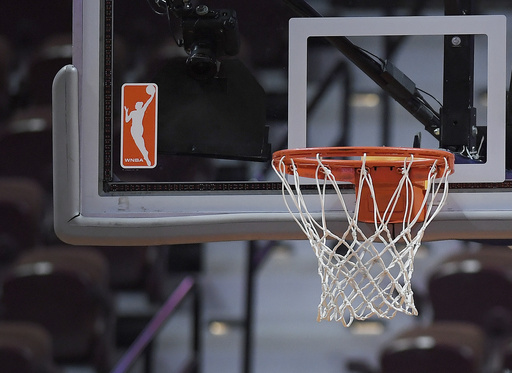
NEW YORK — The WNBA is entering the offseason with a sense of optimism following an exceptional year marked by record viewership, impressive attendance, and the New York Liberty claiming their first championship title.
As the excitement built to a climax with the championship victory celebration at Barclays Center, the league and its players quickly shifted their focus to the future, particularly the upcoming season in 2025.
In a significant move, the players’ union decided to opt out of the current collective bargaining agreement just a day after the thrilling Game 5, ahead of the Liberty’s championship parade slated for Thursday.
This decision had been anticipated, especially with a fresh media rights deal on the horizon projected to bring in around $200 million annually starting in 2026. The players are seeking a larger share of the league’s revenue, as well as improvements in areas like standard salaries and pension benefits.
For the next season, the existing collective bargaining agreement will remain in effect, yet both parties are eager to reach a new deal sooner rather than later.
Typically, negotiations can be contentious, but the positivity surrounding the WNBA is palpable.
The league is set to expand by increasing regular season contests to 44 games and will hold an expansion draft in December for the new Golden State franchise, known as the Valkyries, which will become the league’s 13th team.
Additionally, Toronto and Portland are slated to welcome new franchises by 2026, with plans for at least one more team to emerge by either 2027 or 2028.
While the potential retirement of Diana Taurasi could result in the WNBA losing one of its legendary figures, league officials are looking forward to an exciting draft ahead.
The draft lottery is scheduled for next month and will determine which team earns the top pick, potentially selecting Paige Bueckers, who has a chance to follow in Taurasi’s footsteps as another standout UConn player chosen first overall two decades later.
Many premier athletes from the league will remain in the U.S. during the winter months, participating in Unrivaled, a 3-on-3 league founded by WNBA Finals stars Breanna Stewart and Napheesa Collier, which will kick off in January.
The championship contest between Stewart and Collier has significantly bolstered viewer ratings, with all five games attracting over a million viewers. The decisive Game 5 was especially notable, attracting an average viewership of 2.2 million and peaking at 3.3 million, marking the highest viewership for a WNBA game in 25 years.
Overall, the league experienced its best regular-season ratings in 24 years and achieved its highest attendance figures in 22 seasons, with 22 telecasts reaching at least one million viewers across various networks.
The league’s rookie class, particularly prominent talents like Caitlin Clark and Angel Reese, also played a crucial role in this success, and they are expected to return with even greater performance next season.
“When Caitlin Clark announced her entry into the draft, the surge of excitement was palpable, not just for the team she might join, but for the league as a whole,” remarked Minnesota coach Cheryl Reeve.
“The momentum we’re witnessing in the WNBA is really invigorating, and while there are various contributing factors, there’s a significant one driving it all.”
However, the growth of the league hasn’t been without its challenges.
In the past month, nearly half of the franchises have opted to part ways with their head coaches. Changes are underway in Atlanta, Chicago, Dallas, Los Angeles, and Washington, with all the dismissed coaches having held their positions for three years or less.
In addition, players have voiced concerns regarding a troubling increase in online abuse, including racial and homophobic threats aimed at them, particularly during the WNBA Finals, with Stewart and her wife being recent targets.
Commissioner Cathy Engelbert addressed the alarming rise in social media harassment at her state of the league address ahead of the finals, noting the league’s commitment to collaborating with the players’ union to establish measures to counteract these issues.
While the league grapples with the online harassment and negotiations for a new collective bargaining agreement, it is arguably poised with a stronger foundation than ever since its inception, allowing it to address these pertinent offseason matters effectively.
